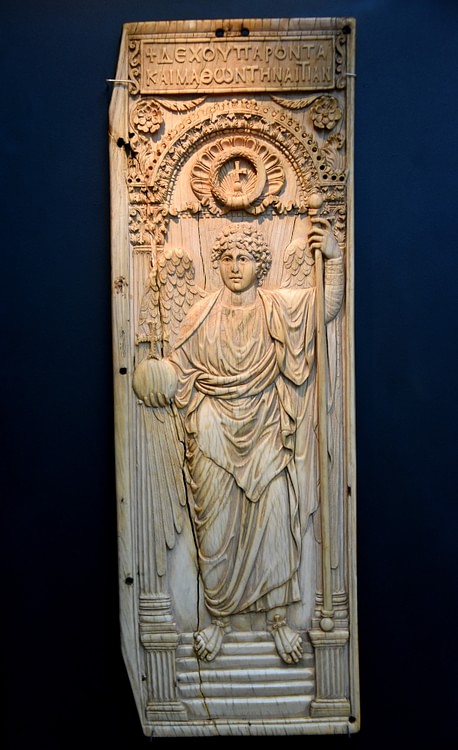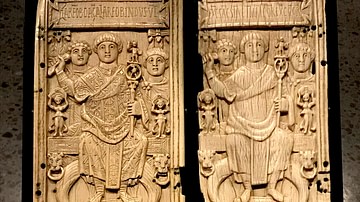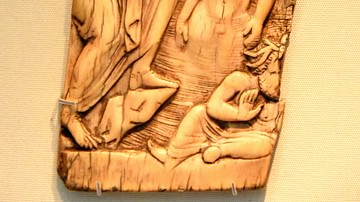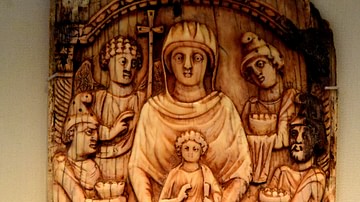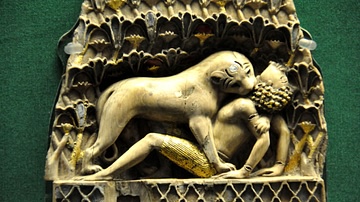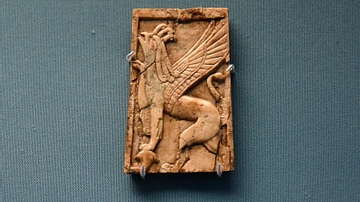Illustration
This is one of the largest surviving ivories from the Byzantine Empire. It comes from a hinged 2-leaf diptych, possibly used as a writing table. It shows an archangel holding an orb and sceptre. The style of his drapery is classical, but the Christian subject matter is Byzantine. The ivory's extraordinary size and quality suggest that it was an imperial commission, perhaps by Justinian I (reigned 527-565 CE), a powerful and successful emperor whose patronage stimulated a golden age in Byzantine art. Byzantine, circa 525-550 CE. Made in Constantinople. (The British Museum, London).
About the Author
Cite This Work
APA Style
Amin, O. S. M. (2016, September 29). Byzantine Ivory Diptych Panel. World History Encyclopedia. Retrieved from https://www.worldhistory.org/image/5727/byzantine-ivory-diptych-panel/
Chicago Style
Amin, Osama Shukir Muhammed. "Byzantine Ivory Diptych Panel." World History Encyclopedia. Last modified September 29, 2016. https://www.worldhistory.org/image/5727/byzantine-ivory-diptych-panel/.
MLA Style
Amin, Osama Shukir Muhammed. "Byzantine Ivory Diptych Panel." World History Encyclopedia. World History Encyclopedia, 29 Sep 2016, https://www.worldhistory.org/image/5727/byzantine-ivory-diptych-panel/. Web. 30 Jun 2025.

